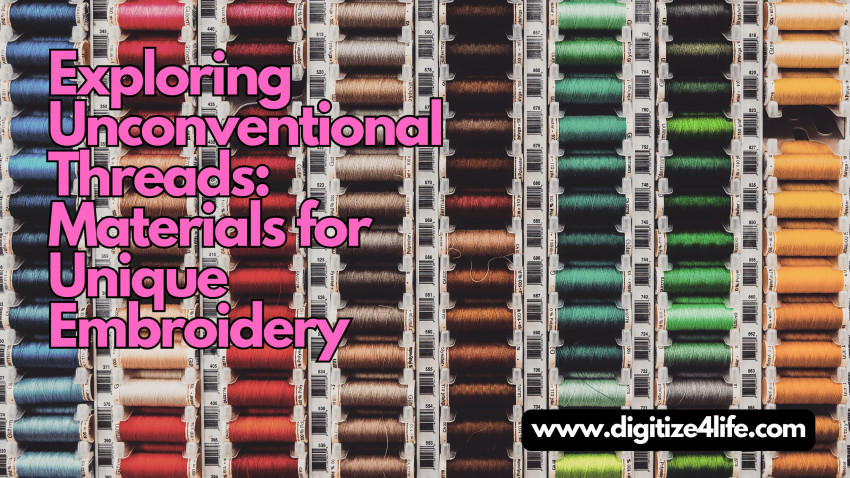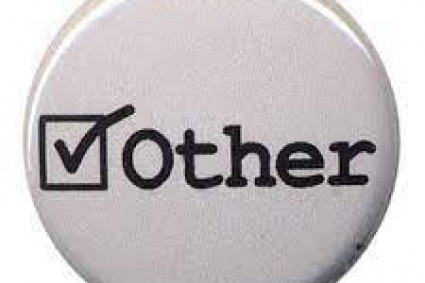
Introduction:
Embroidery, the art of decorating materials with needles and threads, has a rich, long history. Traditionally, embroidery threads were limited to cotton, wool and silk. However, the modern embroidery landscape is evolving and artists are increasingly experimenting with unusual threads. to create unique and attractive designs This blog delves into the world of unusual embroidery threads and explores materials such as steel thread, recycled fibers and more, as well as situations and strategies to help you incorporate these materials into your projects.
1. The Magic of Metallic Threads
Glitter and Sparkle
Metallic threads have long been used to add glamor to embroidery. Made from a mix of steel and synthetic materials, the threads create a striking reflective effect that complements any design. Gold, silver and bronze are the most common metallic tones, but you can also find threads in vibrant shades of purple, blue and green.
Techniques For Using Metal Threads
Working with metal threads requires special techniques to achieve certain extraordinary effects. Use a larger needle to avoid tearing the yarn and a shorter length of yarn to avoid tangling. Using thread conditioner or wax to reduce friction is also helpful.
Creative Applications
Metallic threads are ideal for highlighting specific areas of a design, raising edges or adding texture. They are perfect for holiday projects, nightgowns and any design that wants a little sparkle.
2. The Luxurious Appeal of Silk Threads
Elegance and Versatility
Silk threads have been prized for centuries for their lustrous luster and light texture. They are versatile, suitable for satisfying elementary work and have a great color design. Silk threads are available in a wide range of colors from subtle pastels to rich deep colors.
Silk Embroidery Techniques
Silk threads are more delicate than cotton or wool, so handling them with care is essential. Use a good quality needle and make sure your hands are light to avoid tangling or smudging the threads. Silk threads can be used in traditional strategies such as satin stitch, French knots, and stem stitch, as well as cutting edge strategies.
Applications of Silk Threads
Silk threads are ideal for heritage projects, floral designs and any embroidery that exudes luxury. They are regularly used in bridal wear, over-the-top styles and awkward attempts.
3. Eco-Friendly Embroidery with Recycled Fibers
Sustainable Creativity
As environmental awareness grows, many embroidery machines are using recycled fibers as a sustainable alternative to traditional threads. These threads can be made from many materials, such as recycled plastic bottles, old clothes or even discarded fishing nets.
Challenges and Techniques
Recycled fibers can be difficult to work with because they no longer have the same smoothness or strength as traditional yarns. It is important to test these threads on a sample fabric before starting the most important project. Use a medium-sized needle and be prepared for some variations in texture and thickness.
Eco-Friendly Projects
Recycled fibers are perfect for creating green artwork, bags and home décor. They add a unique rustic charm to your paintings and make a big impact on your surroundings.
4. Exploring Alternative Natural Fibers
Beyond Wool and Cotton
While wool and cotton are still embroidery materials, there are many other natural fibers worth exploring. Linen, bamboo and hemp threads offer special textures and homes that can beautify embroidery.
Linen Threads
Linen threads are strong and durable, and their barely coarse texture adds a rustic charm to embroidery. They are ideal for large projects such as rugs, tablecloths and paintings using traditional strategies such as sewing and needlework.
Bamboo Yarns
Bamboo yarns are soft and easy to work with and have a vegetable sheen. They are also green because bamboo is a very sustainable crop. Bamboo threads are perfect for exceptional, precise painting and give your work a luxurious feel.
Hemp Threads
Hemp threads are strong and have a unique texture that gives the embroidery a completely unique, rustic quality. They are best suited for developing ambitious text designs and are particularly suitable for devices that require durability, such as packaging and accessories. ? . Rayon, polyester and nylon yarns offer unique homes that can beautify your country.
Viscose Yarns
Viscose yarns are valued for their excellent luster and colorful colors. They are extra smooth so are best suited for machine embroidery. But they can be slippery, so it is recommended to use stabilizers when working with them.
Polyester Thread
Polyester thread is long-lasting, colorful and resistant to stretching and shrinking. They are versatile for hand and machine embroidery and are available in a wide range of colors and finishes.
Nylon Threads
Nylon threads are particularly strong and wear-resistant. They are perfect for very durable projects like outdoor gear and sportswear. Nylon threads are also available in several textures, from sheer and shiny to matte and hard. _ textures and effects. Mixing metallic threads with silk or recycled fibers with traditional cotton can create beautiful multidimensional designs.
Layering Techniques
Layering threads of different textures and shades can increase the intensity and complexity of embroidery. Start with a base layer of a strong thread such as cotton or polyester, then cover it with metallic or silk threads to focus on specific areas.
Mixing Colors
Mixing shades of unique yarn types can create a stunning gradient effect. Try combining shades of silk and viscose, or combine vegetable and synthetic fibers to create a harmonious mix.
7. Practical Tips For Working with Unusual Yarns
Choosing the Right Needle
Choosing the best needle is very important when working with unusual yarns. Thicker threads may require a larger needle, while a finer needle is suitable for delicate materials such as silk and bamboo.
Yarn Length and Storage
Keep yarn lengths short to avoid tangling and fraying. Store the yarn in a cool, dry place out of direct sunlight to preserve its color and integrity.
Testing and Sampling
Always check the threads of the pattern fabric before starting a large project. This will help you determine how.





